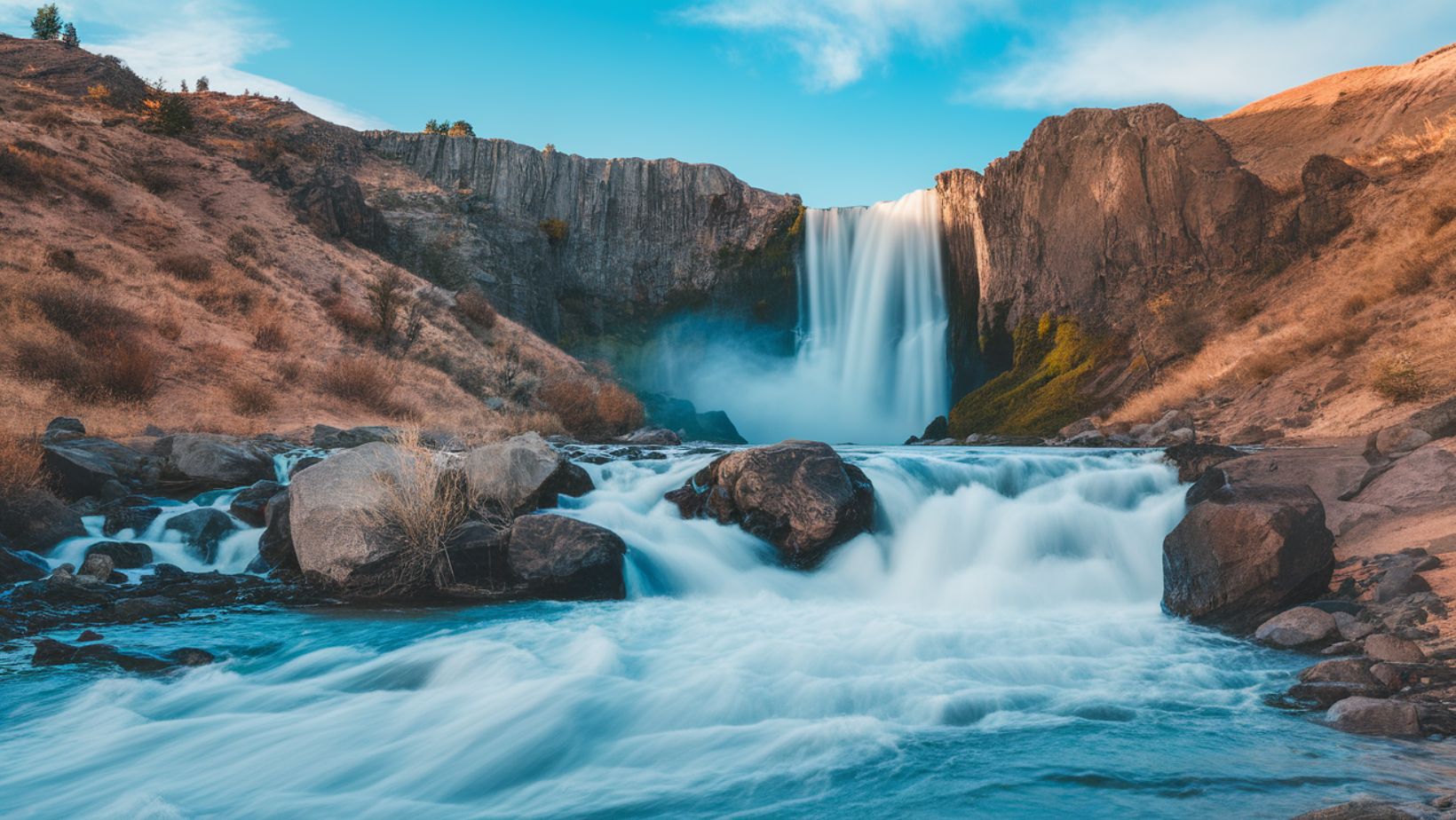What mysterious forces drive a waterfall that never stops flowing, even in the depths of California’s driest summers? How do hidden underground springs feed this perpetual cascade with over 100 million gallons of water each day? Why did President Theodore Roosevelt declare this relatively unknown waterfall the “Eighth Wonder of the World”? At Burney Falls, where volcanic geology meets pristine aquifers, nature performs an endless water ballet that defies conventional waterfall behavior.
Burney Falls Stands as Natures Most Reliable Water Display
Rising 129 feet high and spanning 250 feet wide, Burney Falls creates an extraordinary spectacle of perpetual motion. Unlike other significant waterfalls that depend on seasonal rainfall or snowmelt, Burney Falls maintains a constant flow rate of 100 million gallons per day throughout the year. This remarkable consistency comes from an extensive network of underground springs, fed by volcanic aquifers that have been filtering water through ancient lava tubes for millennia.
Volcanic History Creates Perfect Conditions for Eternal Flow
The falls’ unique geology, shaped by volcanic activity millions of years ago, created the perfect conditions for this perpetual cascade. Like Earth’s most impressive cave systems, the underlying basalt rock structure contains countless fissures and tubes through which groundwater travels. This creates not just the main falls but also hundreds of spring-fed side cascades that emerge directly from the rock face, creating a stunning curtain of water that spans the entire cliff width.
Microclimate Sustains Unique Ecosystem Year Round
The constant water flow and resulting mist create a unique microclimate around the falls, similar to other magical natural pools. This environment supports a diverse array of plant and animal species that wouldn’t typically survive in the region’s Mediterranean climate. Rare mosses and ferns thrive in the constant spray, while various bird species nest in the protected cliff faces behind the waterfall curtain.
Underground Springs Network Defies Drought Conditions
The extensive underground aquifer system that feeds Burney Falls represents one of California’s most remarkable hydrological phenomena. Even during severe droughts, the falls continue flowing at full capacity, demonstrating the resilience of deep groundwater systems. Scientists study this phenomenon to better understand sustainable water management in an era of increasing climate uncertainty.
Visitor Access Balances Preservation with Appreciation
Modern infrastructure allows visitors to experience the falls from multiple vantage points while protecting the delicate ecosystem. A paved trail leads to the base of the falls, where the cooling mist and thunderous sound create an immersive experience. Viewing platforms strategically positioned along the descent offer different perspectives of the falls’ unique curtain effect.
Photography Challenges Inspire Creative Solutions
The falls’ constant mist and wide curtain of water present unique challenges for photographers. The interplay of light through the water droplets creates rainbow effects throughout the day, while the cave-like formations behind the falls offer dramatic lighting contrasts. Specialized techniques and equipment are often required to capture the falls’ true magnitude and beauty.
Scientific Research Reveals Hydrogeological Secrets
Ongoing research at Burney Falls provides valuable insights into groundwater systems and volcanic geology. Studies of the water’s mineral content help track its underground journey, while flow rate monitoring helps scientists understand the aquifer’s capacity and recharge rates. This research has implications for water management throughout the volcanic regions of the western United States.
Conservation Efforts Protect Vital Water Sources
Protecting the falls requires safeguarding an extensive watershed that extends far beyond the visible park boundaries. Conservation efforts focus on maintaining water quality in the aquifer system and protecting the surrounding forest that helps regulate groundwater recharge. These efforts involve cooperation between state agencies, local communities, and environmental organizations.
Historical Significance Spans Centuries
Native American tribes considered Burney Falls a sacred site long before European settlement. Their oral histories contain detailed knowledge about the falls’ geological features and ecological significance. President Theodore Roosevelt’s famous designation of the falls as the “Eighth Wonder of the World” helped ensure its protection for future generations.
Future Challenges Require Innovative Solutions
While Burney Falls’ underground water source provides remarkable stability, climate change and regional development pose potential threats to this system. Scientists monitor groundwater levels and recharge rates while developing management strategies to ensure the falls’ continued flow. Educational programs help visitors understand the importance of protecting not just the falls but the entire watershed that sustains them.
